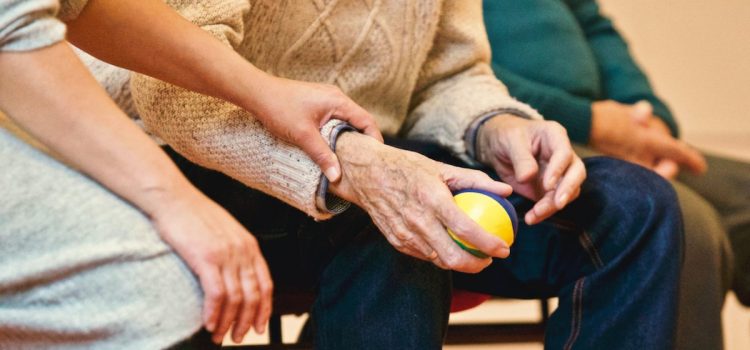

This article is an excerpt from the Shortform book guide to "If You Tell" by Gregg Olsen. Shortform has the world's best summaries and analyses of books you should be reading.
Like this article? Sign up for a free trial here.
What happened to Shelly Knotek’s friend Ron Woodworth? What injuries led to his death?
As a friend of Shelly Knotek, Ron Woodworth came to live with her and her family in 2001. But, problems arose when he started to fall into the same cycle of abuse as Shelly’s former victims did.
Keep reading to learn how Ron became a victim of Shelly’s abuse.
Ron Woodworth’s Stay at the Knoteks‘ House
According to Gregg Olsen’s If You Tell, a recounting of the abuse and murders brought on by Shelly Knotek, Ron Woodworth moved in with the Knoteks. Like Kathy Loreno, he had run into financial problems and was broke, emotionally vulnerable, and estranged from his family. Shelly invited him to stay with them so he could get back on his feet.
One of Shelly’s daughters Nikki no longer had contact with anyone in her family except her sister Sami, and her other sister Tori was too young to remember what had happened with Kathy, but Ron’s arrival set off alarm bells in Sami’s head. Still, she forced herself to believe that what had happened with Kathy wouldn’t happen again and that Ron would be strong enough to withstand Shelly. She was wrong.
Again, the relationship between Ron and Shelly started out as a loving friendship, but soon Shelly began degrading him and chipping away at his self-worth. The slide into abuse happened much more rapidly than it had with Kathy, but the pattern was the same: physical abuse, restricting bathroom usage, drugging, and isolating him from family.
As punishments got worse, Shelly forced Ron to drink his own urine, punch himself in the face as hard as he could over and over, and repeatedly jump barefoot off their two-story house. His feet became covered in open wounds that wouldn’t heal.
Like Kathy’s, his body began to deteriorate. He lost weight, and his teeth fell out. When his condition started to mirror Kathy’s in her final months, Shelly seemed to grow worried and started trying to get him to move out. She said she was going to take him to a homeless shelter, but Ron refused to go and threatened to kill himself if they made him leave.
In July 2003, Ron died from his injuries. Due to a heat wave, there was a burning ban in place, so Shelly’s husband Dave buried Ron with the intention to dig him back up and burn him when the ban was lifted. Shelly insisted to Tori that he was fine and was at a friend’s house, resting. She told Tori not to tell anyone about what had been going on, and that if she did, she’d disown her. Then Shelly’s focus returned to Tori, and the abuse worsened.
| Trauma Bonding: How Victims Become Attached to Their Abusers The pattern of abuse that Shelly followed with her victims is a common abuse pattern that can result in trauma bonding in a victim. Trauma bonding is when an abuser manipulates their victim into forming a deep connection with them, making the victim dependent and making it harder for the victim to leave the abusive situation. Trauma bonding is cyclical and tends to occur in seven stages, all of which are visible in Shelly’s treatment of her victims. Stage 1: Love bombing. In the first stage, the abuser showers the victim with love and affection. They establish a strong connection to their victim and use it to imply that they’re offering the victim something no one else can offer. Shelly presented herself as a benevolent caretaker who could provide her victims with support at a time when they felt they had been abandoned by the other people in their lives. Stage 2: Creating trust and dependency. The second stage is when the abuser cultivates a feeling of trust with the victim that leads to an unhealthy dependency. They often do this by emphasizing what they’ve done for the victim and suggesting the victim isn’t appreciative enough. Shelly frequently claimed she was helping her victims even when it was clear she was harming them, and she justified her violence by claiming her victims weren’t grateful for everything she’d done for them. Stage 3: Criticizing. In the third stage, the abuser begins harshly criticizing their victim, making them believe they deserve their mistreatment and convincing them that they’re deeply flawed. Shelly always claimed her victims deserved the abuse she directed at them because they were “bad” or because they misbehaved. Stage 4: Manipulating. In the fourth stage, the abuser psychologically manipulates the victim into believing the abuse isn’t that bad or that they’re imagining it. This often involves gaslighting, which is a tactic that causes a victim to question their own perception of reality. Shelly used gaslighting to make her victims believe they were doing bad things and were imagining—or dreaming—the abuse she inflicted. Stage 5: The victim resigns themselves to the abuse. At this stage, the victim no longer believes the abuse is avoidable and gives up on trying to stop it or escape it. They often engage in fawning or people-pleasing to avoid conflict, and they may become even more dependent on the abuser during this stage by trying to appease them—for example, by marrying them or becoming more financially dependent on them. In the later stages of their mistreatment, Ron and Kathy stopped resisting the abuse and began engaging in self-harming behaviors under Shelly’s orders, and they refused help from the children because they knew it wouldn’t do any good. Stage 6: The victim loses their sense of self. In the sixth stage, the victim loses touch with their sense of identity and boundaries. By this point, their self-esteem is often gone, and they lose memories of who they used to be because of the way their abuser has isolated them. Particularly in Kathy’s case, Sami and Nikki described a complete loss of personality as her mistreatment progressed. Stage 7: The victim becomes addicted to the cycle of abuse. By the seventh stage, the victim becomes addicted to the cycle of love bombing, creating dependency, and mistreatment. The instances where the abuser is loving may be the victim’s only relief from their mistreatment. The fact that the abuser blames their actions on the victim also makes the victim feel like they have some control over the situation, so the victim will devote all their efforts to regaining the abuser’s affection to try to avoid more abuse. The victim becomes psychologically dependent on the abuser’s love bombing and on their own illusion of control. This addiction may explain why Kathy and Ron never left, despite being adults who had the means and resources to do so. It’s also demonstrated in the way that Ron wouldn’t leave even when Shelly ordered him to, and how he threatened suicide if she forced him out. |

———End of Preview———
Like what you just read? Read the rest of the world's best book summary and analysis of Gregg Olsen's "If You Tell" at Shortform.
Here's what you'll find in our full If You Tell summary:
- The true story about abusers and murderers Shelly and Dave Knotek
- The events leading up to Shelly and Dave's arrests and convictions
- A look into the psychology of abuse and psychopathy






